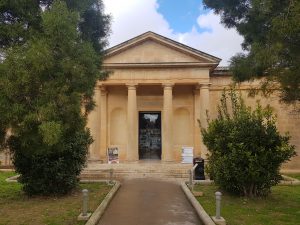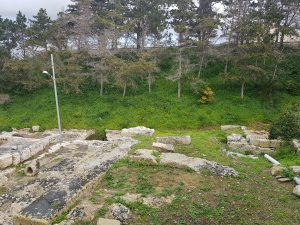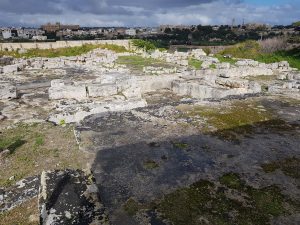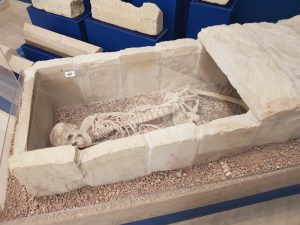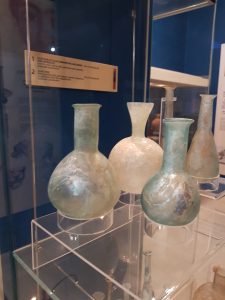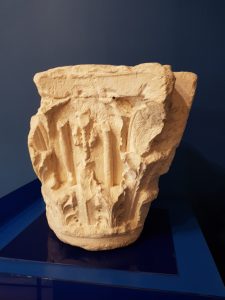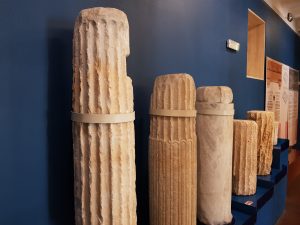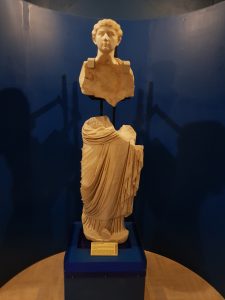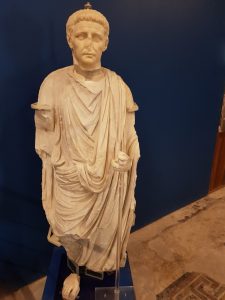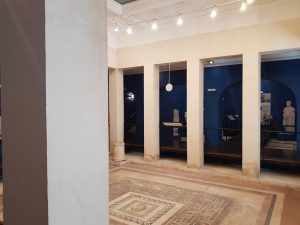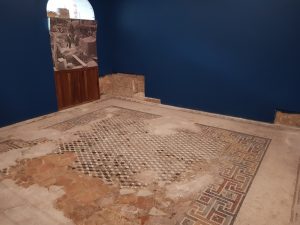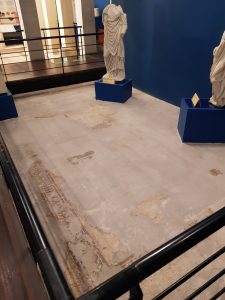Malta – Northern Region – Mdina – Domus Romana
I rather over-dosed on Roman history when I visited Trier a couple of weeks ago but although Malta has a lot of Roman history, there’s only one museum dedicated to it. This is a former Roman settlement in Mdina which has some extensive mosaics in the main building, and some other associated buildings which mostly weren’t as grand.
This is the side of the site, with Roman buildings visible in the foreground. They would have been in the background as well, but the British built a road through the site in the mid to late nineteenth century. There were no records made of what was found, so much has unfortunately been lost to history. The Roman site itself was located shortly after, in 1881, during a landscaping project and was then carefully excavated.
More of the external buildings.
A skeleton which was found on the site from an Islamic cemetery built around the ninth century AD. The cemetery was built around the former Roman buildings and numerous Islamic gravestones have been found.
Roman glass.
I’m not really into my Roman columns, but this is apparently an internationally important example of an Italic-Corinthian capital as few are found intact.
More pillars.
This statue of Antonia comes from this site and it’s thought to have been from an administrative building rather than from a residential property.
Another statue found at the site, this time of Claudius, dating from the 1st century AD.
The mosaic in the main courtyard room.
This is the tablinum, so could have been used as a reception room or study. There have been some fairly crude repairs to the mosaic floor during the later Roman period which look like I’ve done them.
Not much of the mosaic flooring has survived in the triclinium, which would have been used as a family dining room.
I had a Heritage Malta pass so didn’t pay for admission directly, but there are also options such as the Rabat ticket which gives admission to a few historic sites in the area. Visiting just the Roman museum is though perhaps just a little expensive at €6.
Overall, I thought that this was a reasonably sized museum, which I deliberately visited from the end to the beginning, solely because there was a group of school children behind me. Fortunately they were well behaved children who didn’t get in my way, or indeed that of any other visitor. It’s a shame that more of the site didn’t survive the British road building, but at least a decent amount is still visible.

